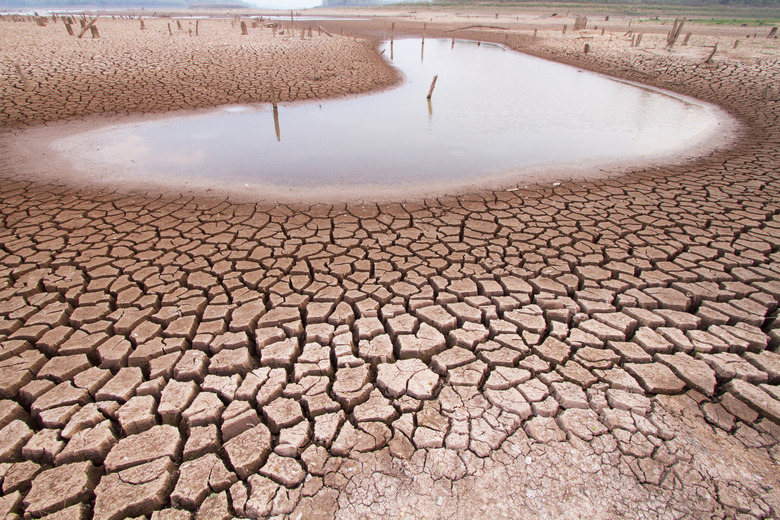How Does The Weather Affect Us?
Weather, consciously or unconsciously, affects the daily choices you make. It helps to determine whether you dress to stay warm or cool, enjoy outside activities or stay inside – or evacuate to a safe place during extreme weather conditions. It can have both immediate and delayed effects on health, food production and general well-being. Don't confuse climate and weather as the same phenomena, because they're not. Climate represents averaged weather conditions over several years, while weather is something that can change every single day in every single location around the world.
TL;DR (Too Long; Didn't Read)
Weather affects everyone and everything it its path, beginning with the clothes you put on to meet your day to the type of outdoor activities you choose to engage in. Weather impacts human, animal and plant health, as well as the food supply, and it contributes to the average climate in your area.
Strokes, Heart Attacks Increase During Winter
Strokes, Heart Attacks Increase During
Winter
Blood vessels naturally constrict during colder weather, which leads to higher blood pressure in the body in the winter. As a naturally occurring survival mechanism in all mammals, blood vessels constrict to maintain body temperature and control heat in the winter. Blood pressure rises because there's less room for the blood to move through the circulatory system. A study from the University of Florida found that fatal heart attacks and stroke peak during the winter months.
When Weather Brings the Blues
When Weather Brings the Blues
Seasonal Affective Disorder occurs frequently among people who live under constant cloud cover or reduced sunlight in the winter. In people diagnosed with this disorder, depression usually sets in at the onset of fall and dissipates when the Earth cycles back to spring at their location. Although SAD can affect most anyone, more women seem to experience this type of depression than do men. Symptoms include irritability, concentration issues, changes in sleeping and eating habits, lethargy and loss of interest in once enjoyable activities. The cure: sunlight, vitamin D or hours spent beneath light-therapy lamps.
The Foods People Eat
The Foods People Eat
Weather and climate play a big role in the fruits and vegetables people eat. With limited growing seasons in some parts of the country, certain foods and vegetables are simply not growable and must be shipped from other states or countries. Weather patterns also impact the ocean – more than people realize – and can affect fish populations, the fisherman who harvest them and the people who consume them. Flood or drought conditions, as well as severe cold snaps and freezes, can wipe out entire crops.
Weather Patterns and Jet Streams
Weather Patterns and Jet Streams
Most scientists and meteorologists posit that increased CO2 and other greenhouse gases leaching into the atmosphere results in global warming, aka climate change, which many people often mistake as a simple increase in temperatures. Scientists have linked climate change with extreme weather conditions that include floods and droughts, lightning-strike wildfires, unusual heat waves and changes in the jet streams that circle the Earth. In the state of Virginia, for example, four of the state's biggest snowstorms have occurred in the last 10 years, more than likely due to climate changes's effects on weather.
References
- University of Florida: Cold Weather Hikes Blood Pressure, UF Scientist Warns
- Harvard Health: Seasonal Affective Disorder: When Winter Brings the Blues
- UCSB ScienceLine: How Does Weather Affect the Way We Live?
- Penn State University: Extreme Weather Events Linked to Climate Change Impact on the Jet Stream
- NOVEC: Virginia's Historic Snowstorms
Cite This Article
MLA
Brenner, Laurie. "How Does The Weather Affect Us?" sciencing.com, https://www.sciencing.com/weather-affect-us-23423/. 17 April 2018.
APA
Brenner, Laurie. (2018, April 17). How Does The Weather Affect Us?. sciencing.com. Retrieved from https://www.sciencing.com/weather-affect-us-23423/
Chicago
Brenner, Laurie. How Does The Weather Affect Us? last modified March 24, 2022. https://www.sciencing.com/weather-affect-us-23423/
